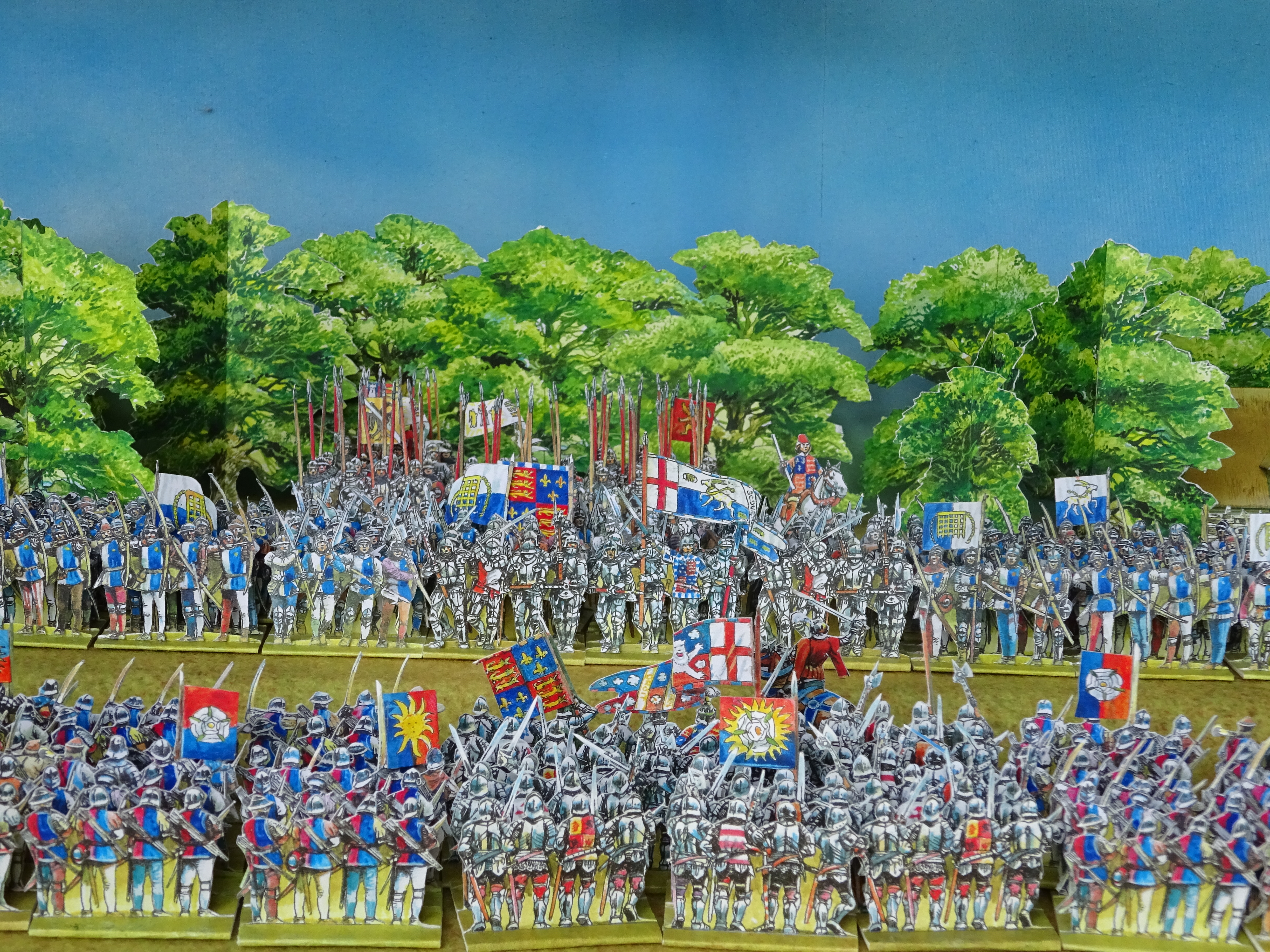Illustrator Peter Dennis looks back at the inspiration behind his new paper soldier wargame series in time for the publication of 1066 and Wars of the Roses.

I opened the pages of an old dictionary the other day and a collection of paper soldiers I had made at the age of about 10 slipped out to remind me that the appeal of the two dimensional man has simmered away in me for a long time (Figure 1). These guys are double-sided and were meant to move about on a drawn landscape.



It was an encounter with an exhibit of 19th century Imagerie D’Epinal cut out figures in the Army Museum in Paris that fired up my next attempt at paper warriors about nine years later. Printed in black and white then hand painted, they were impossibly delicate and somehow lacked the charm of the swaggering, confident fellows that inspired them (Figure 2).
Three dimensional wargames held me for the next forty years and had it not been for an idle moment of scrap paper folding in my workroom I might never have attempted to revive my old interest. As I tossed down the concertina fold it landed in such a way that I saw ranks of soldiers standing on a base in it (Figure 3). Within ten minutes the prototype was made and it has evolved into what we call the ‘Paperboys’, a stand system of figures, which stand up well, in every sense of the phrase, to the rigours of the wargame table. Themany reproduction possibilities available cheaply today, make this the ideal time to revive the battling paper soldier.
At Salute 2016 Helion & Company launched the Battle for Britain series with its first book, Wargame the English Civil War: 1642-1651.
The Battle for Britain Series:
The books contain figure sheets, as complete a collection of the types needed for the subject war as I could think of, and terrain items, trees and buildings. The ‘source book’ idea is that the reader is invited to copy the pages as often as he needs to build his army. Figure stands are made with glue and scissors, but wargaming is a craft hobby, and the work required is much less demanding than traditional figure painting. Andy Callan, who has a long track record in wargames innovation has come up with rules sets designed to be playable and easily understood by the beginner.



1066 features Saxons, Viking and Normans of course, for the battles of this most turbulent year in our history. Andy has described the three major encounters in wargame terms with maps, but the book can be used for many battles in the mis-named Dark Ages, and a ship model is included for dedicated Vikings.
Wars of the Roses has liveried Bills and Bows for the major players in this game of thrones, plus a wide variety of mercenary types, including Irish Kern and Scottish spearmen. This book is packed with figure artwork sheets, so the terrain items are limited to a couple of buildings and tree types. Andy’s rules create a rather chess-like game structure which players will find has more subtlety to it than the simple mechanics might imply.
Peter Dennis is a historical and military illustrator of long standing with more than 150 titles to his name. To learn more about his wargames, visit the Casemate website.


 Follow
Follow